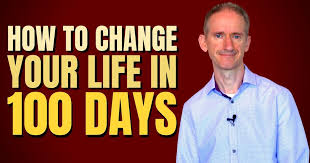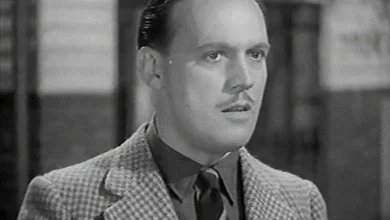Marilyn Scott Going Back to you Chords: A Complete Guide

Marilyn Scott is a renowned American jazz vocalist known for her rich, emotive tone and her smooth blend of contemporary jazz and soul. With a career spanning several decades, she’s worked with jazz legends and created a repertoire that speaks to fans of both classic and modern jazz.
Background of the Song “Going Back To You”
“Going Back To You” is a standout track in Marilyn Scott’s discography. Known for its lush harmonies and emotional depth, the song paints a picture of longing, introspection, and soulful return both musically and lyrically.
Genre and Musical Style
The song lives comfortably in the smooth jazz realm, with hints of R&B and soul, wrapped in a soothing, melodic progression that makes it a favorite among musicians seeking to blend emotion with technical precision.
Why This Song Resonates With Jazz Fans
Soulful Elements and Smooth Jazz Vibes
The chords carry a velvety warmth. Think of sitting by a fire with a glass of wine that’s the mood this song delivers. The groove is relaxed but deeply felt, offering space for emotional interpretation.
Lyrics That Connect Emotionally
Scott’s vocals tell a story it’s not just about going back to a person, but returning to a part of yourself you may have lost. This universal message hits home for many listeners.
Timeless Arrangement
The arrangement balances traditional jazz sensibilities with modern production. The lush keys, subtle guitar riffs, and saxophone accents all contribute to the song’s enduring charm.
Chord Progressions – The Heart of the Song
Overview of the Song’s Structure
-
Intro
-
Verse 1
-
Chorus
-
Verse 2
-
Chorus
-
Bridge
-
Final Chorus & Outro
Verse Chords Breakdown
The verse commonly follows a progression like:
Em7 – A13 – Dmaj7 – Gmaj7
This classic ii-V-I in jazz, spiced with some substitutions, forms the backbone of the song’s melody.
Chorus Chords Breakdown
Bm7 – E9 – Amaj7 – Dmaj7 – G7 – Cmaj7
This portion lifts the harmonic tension, giving a sense of motion and emotional rise.
Bridge or Solo Section Chords
F#m7 – B7 – Emaj7 – Amaj7 – D13 – Gmaj7
Here’s where the jazz roots deepen with altered chords and dominant substitutions giving color.
Detailed Chord Chart
Key Signature and Tempo
-
Key: D Major
-
Tempo: 70–80 BPM (Ballad Tempo)
-
Time Signature: 4/4
Intro & Verse Chords
Chorus Chords
Bridge Chords
Outro Chords
How to Play the Song on Guitar
Chord Fingerings and Shapes
Guitarists can simplify by using barre chords and extended shapes. Jazz players will benefit from chord voicings like:
-
Em7 – x75787
-
A13 – 5x567x
-
Dmaj7 – x57675
Strumming Patterns
A soft, syncopated strum with emphasis on 2 and 4 works well here. Use dynamics to add emotion.
Transposition Tips
If D major is too tricky, try a capo on the 2nd fret and play in C major shapes.
How to Play the Song on Piano
Voicing the Jazz Chords
Use rich voicings like:
-
Dmaj7 – D, A in the left hand, F#, C# in the right
-
Gmaj7 – G, D in the left, B, F# in the right
Left-Hand Bass Movement
Walking bass or root-fifth patterns will help maintain the groove and rhythm.
Dynamics and Feel
Keep it mellow light touch, smooth transitions, and plenty of sustain pedal to mimic the album’s ambiance.
Vocal Performance Tips
Tone and Expression
Use a warm, breathy tone for verses, then build slightly on the chorus. Emotion matters more than volume here.
Timing and Phrasing
Stay behind the beat slightly for a laid-back, jazzy feel.
Harmonizing the Chorus
Try thirds and sixths for background vocals or a duet version.
Music Theory Behind the Chords
Jazz Harmony Insights
The song leans on ii-V-I progressions and modal interchange both staples in jazz writing.
Common Substitutions Used
Subbing A13 for A7 and G7 for Gmaj7 adds spice. These changes give the song its jazzy flavor.
Why the Progressions Sound So Good
It’s all about tension and release. The dominant chords (like E9 and B7) resolve satisfyingly into their target chords, creating emotional movement.
Tips for Learning This Song
Breaking the Song into Sections
Practice each section intro, verse, chorus, bridge individually before stitching them together.
Practice Routines
Daily 15-minute sessions focusing on chord transitions and dynamics can yield great results in a week.
Using Backing Tracks
Play along with a slow jazz backing track in D major to internalize rhythm and harmony.
Song’s Popularity and Legacy
Influence on Jazz Artists
This song has inspired many modern jazz vocalists to embrace storytelling with harmony.
Notable Covers and Performances
Though not widely covered commercially, many YouTube jazz vocalists have tried their hands at it.
Lasting Appeal in the Jazz Community
Its lush arrangement and introspective lyrics have kept it relevant over the years.
Recording and Production Notes
Instrumentation Used
-
Electric piano
-
Electric guitar
-
Upright bass
-
Brushes on drums
-
Saxophone accents
Arrangement Style
Minimalist but emotive giving plenty of space for vocal interpretation.
Mixing and Audio Texture
Warm tones, reverb-laced piano, and soft backing vocals help the song glow.
Where to Find Official Sheet Music
Online Resources
-
MusicNotes
-
SheetMusicPlus
-
Hal Leonard Jazz Library
Books and Jazz Collections
-
“Jazz Ballads for Vocalists”
-
“Smooth Jazz Favorites Songbook”
Transcriptions by Fans
YouTube and Reddit often have user-generated chord sheets and play-along tutorials.
Communities and Forums Discussing the Song
Reddit and Jazz Subforums
Check r/Jazz and r/Musictheory for discussions.
Jazz Guitar Communities
The Jazz Guitar Forum and TrueFire communities are good resources.
YouTube Covers and Tutorials
Search “Going Back To You Marilyn Scott guitar/piano tutorial.”
Using the Chords for Your Own Songwriting
Adapting the Progressions
Borrow a ii-V-I or extended chords for your ballads or lo-fi tracks.
Creating Mood with Jazz Harmony
These chords can transform even simple lyrics into something cinematic.
Experimenting with Modulations
Use the bridge chords to pivot to new keys great for building surprise.
Conclusion and Final Thoughts
“Going Back To You” by Marilyn Scott is more than just a song it’s a journey through lush harmony, heartfelt emotion, and jazz sophistication. Whether you’re a guitarist, pianist, or vocalist, this song offers something special to learn, interpret, and perform. Let the chords guide you not only back to the music but back to your emotional core.
FAQs
1. What key is “Going Back To You” in?
The song is typically played in D major.
2. Can beginners play this song?
With simplified chords, yes! It’s a great piece to grow into.
3. Is there a simplified chord version?
Yes. You can transpose to C major or use open chords.
4. What’s the best instrument to play this song on?
Both guitar and piano work beautifully, but piano highlights the jazz voicings more.
5. Are there any official chord charts available?
Yes, sites like MusicNotes and SheetMusicPlus offer licensed charts.



